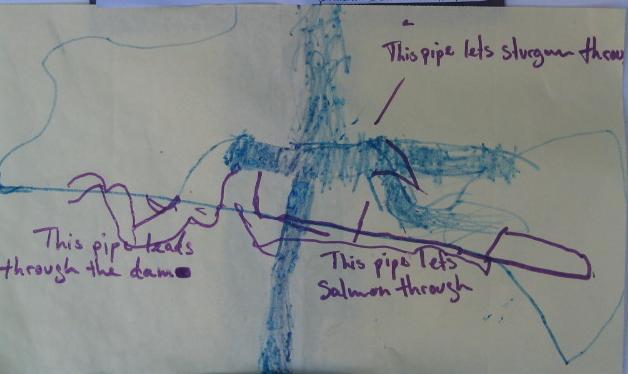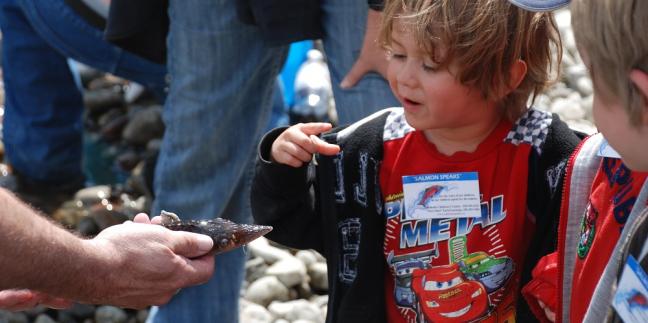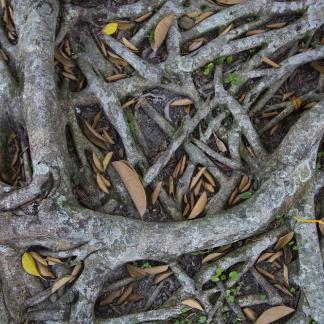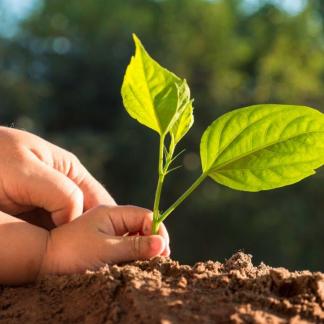Exercising Their Right to Speak Up

Salmon Speaks’ Lasting Impact
Though the dams remain in place, we’ve found success in recognizing our own growth through this transformative experience. We now feel stronger, more resilient, and more knowledgeable than before we began this journey with the children. We find comfort in a community of individuals who share our concerns and our hopes and see numerous possibilities for continuing the work the children started. The first children involved in this project have gone on with their lives, but they’re more confident in sharing their perspectives and they continue to stand up for others. The project itself has been a powerful influence on the programming of both Wee Ones and Valhalla Children’s centers. We share the Salmon Speaks story with children year after year, along with stories about others who have tried to make things better for our world.
The project also lives on through our lessons about salmon in the Kootenays and Slocan Valley river system, once teeming with salmon, now transformed by dams. Every year, we travel up the Kootenay Lake to witness the landlocked Kokanee salmon spawning. Together, we learn and experience how one fish can have such a big impact on people, animals, and the environment. Every year, the children take part in releasing sturgeon into the Columbia River, another fish impacted by the dam system. They hold the fish, feel their wiggling in their hands, and wish them a happy, long life as the sturgeon swim away and out of sight. Through these experiences, they build connections to the salmon and the sturgeon.
Valuing Children’s Voices
Children have ideas of their own about how to make things better, and it’s vital that adults recognize and support these ideas. I remember listening to the children’s plans to help the salmon years ago and, amazingly, year after year, their ideas are still so similar. More amazing still is that their ideas, discussions, and sketches from the project are similar to solutions being proposed by adults to bring back salmon to the Columbia River system. Lifting the fish up to the top by an “elevator” lift system? This method is already being used in parts of the world. Fish travelling through pipes up and over the dams? Yes, this “whoosh” technology sucks up the fish and releases them over the top of the dam, like a vacuum cleaner hose. Children are amazing and we as adults need to listen to them much, much more than we do.
What will happen in the future? We still hope to share our salmon story with others. More and more people are understanding the value of having salmon back in our river system and working towards that goal. As Henry Stensgard told us, “go to the river, clap those rocks together, sing and call to the salmon. The more children that come, the louder the sound, those salmon will hear. The dams will fall and they will come.”

Learning How to Listen
In most countries of the world, children are perceived as passive recipients of care and protection. Their capacities for participation in the life of the community are unrecognized and their agency is underestimated. Now this idea is being challenged. Like every one of us, each child is an expert in their own lives. Young children are skillful communicators who can share their views, needs, and experiences in many ways. The Reggio-Emilia pedagogist, Loris Malaguzzi, refers to children’s many ways of communicating as “100 languages of children.” Like the little ripples on the lake, they are all active agents who interact and influence the world around them, transforming and being transformed.
As one of those touched and transformed, they have taught me to listen to what they say. Listen with your ears, your eyes, your whole body. Listen to each child because each child brings their own perspective, their own family experiences, their own culture, their own body of knowledge that they will share with others in their own time and in their own way. The project “Salmon Speaks” reminds me to support those interests and to provide meaningful experiences for explorations and meaning-making. If you do, you will find yourself a part of every one of their adventures in learning about the world. As Zachary, one of the children enrolled in Valhalla Children's Center, reminds me every day, “you’re a kid, too, Natalie.” What an honour!
About the Author
Natalie Lucas is Manager and Educator at Wee Ones Daycare & Preschool and Valhalla Children’s Center in British Columbia.




